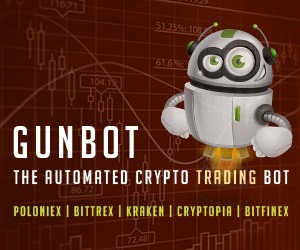Elizabeth Warren, for example, is certainly preparing for war .
The Trust Dealer’s Attack Types
Before we consider how to balance decentralization, security and scalability, let’s consider how incumbent trust dealers might think about attacking decentralized systems.
Most attacks are likely to fit into three categories:
Brute Force
Confidence Erosion
Co-Opting
Brute Force Attack
The first way is blunt — they will use emotional appeals and, eventually, brute force to discourage or block you and I from interacting with decentralized systems. They are doing this today — using all sorts of misdirection to put down DeFi systems. Some nations have even implemented bans — though none have been of much use, with decentralized systems growing despite the bans.
The brute force attack isn’t working — so they will add on new attacks.
Confidence Erosion Attack
The second involves a bit of subterfuge ˆ with the intent being to disrupt the system in such a way as to damage people’s trust in it. This may come in the form of a hack orchestrated by rogue agents and possibly demonstrating the power of the government to fix it. Powerful financial entities could even use their existing power to create money in order to manipulate prices, destroying confidence in the operation of the markets for assets in the new financial system.
Market manipulation is an age-old practice.
Image source
Co-opting Attack
The third attack involves a dash of diplomacy — they may try to co-opt a system with meager decentralization, working closely with blockchain developers to help them achieve better security and scalability. Eventually, the system then steers away from decentralization and ends up looking exactly like the centralized financial system it was meant to replace!
Central bank digital currencies (CBDCs) are another example of a co-opting attack. Governments are building systems they control via the ability to change supply and block transactions, but they are offering them as better alternatives to truly decentralized networks. Elizabeth Warren does exactly this — bashing Bitcoin then praising CBDCs as a better solution to the same problem.
However, CBDCs are not decentralized – the settlement layers of every CBDC will be completely owned and operated by their respective central bank, the biggest trust dealers of them all.
Getting Priorities Straight: Decentralization And Security
All three attacks exploit weak decentralization and poor security. None of the attacks take advantage of any lack of scalability.
Decentralization and security are clearly more important than scalability to the safety, let alone growth, of a DeFi system. It bears repeating that the incumbents in our centralized financial system are the most powerful, well-connected and resource-rich entities on the planet today. Any compromise in decentralization or security in order to support increased scalability is a dangerous trade-off, opening doors for a variety of attacks.
While decentralized systems continue to undergo attacks from incumbents, those building the systems must build in layers. Like erecting a skyscraper, first a deep foundation must be poured, then the steel goes up, then all the inner parts that make it a livable space. You cannot start by stacking glass 10 floors high on an empty lot.
Before we can pay for coffee with bitcoin or make on-chain credit default swaps, we need to ensure the blockchain is as secure and decentralized as possible. The foundation cannot be compromised in the name of scalability. Just like a building, the layers on top of the foundation can trade away some strength for beauty, usability and more.
Foundations not built to withstand shocks cannot support complex structures.
Image source
Which blockchain today is making the right trade-offs to give us the best shot at developing DeFi?
Bitcoin Is DeFi, Altcoins Are Not
While the press and YouTube shill artists will have you think that DeFi is the sole possession of non-Bitcoin networks, these protocols are seriously lacking in security and decentralization compared to the slow, old, “outdated” Bitcoin.
The Sagging Cathedral Of Altcoins
Like a beautiful cathedral built on a marsh, these projects look shiny and promising today but lack the solid foundation to be around tomorrow as the basis of a DeFi system. These networks sacrifice security and decentralization in the name of programmability and transaction throughput. This gives us things to talk about — lots of developer activity, new tokens, protocols — but it hides a lack of supporting strength.
Take Ethereum for instance, long the frontrunner of the DeFi world.
Ethereum suffers from:
A monetary policy that is unpredictable and openly targets “minimum issuance to secure the network.” As stated previously, attempting to “optimize” security is dangerous.
An unclear roadmap for a change to the chain’s consensus mechanism , with frequent delays. This is akin to trying to replace the engine of a plane during a flight.
Difficulty in setting up and syncing full nodes , which are critical to decentralization of the network. A single company, Infura, provides full nodes as a service which many key applications (“DApps”) rely on at their own peril.
This makes Ethereum open to all sorts of attacks, from co-opting by governments to direct attacks on chain security. The Ethereum chain was even publicly attacked, with its own founder leading the charge, in order to rewrite the chain history after a hack exploited a smart contract on the platform. No wonder the Federal Reserve — the very bastion of today’s centralized financial system — is waxing poetic about the wonders of DeFi on Ethereum!
Ethereum’s monetary policy — labeled with each spurious change by developers.
Image source
DeFi on Ethereum and others may be the talk of the town today, but the brightest flames usually burn out first. Bitcoin may not be as flashy, but strong foundations never are — instead they are enduring.
The Humble Fortress Of Bitcoin
Bitcoin optimizes for security and decentralization over scalability. While complex financial contracts are difficult to execute on Bitcoin’s blockchain, Bitcoin beats all other blockchains on security and decentralization.
It is critical that we build financial infrastructure on top of the most decentralized protocol with the highest security while still allowing other layers to settle into the protocol. Bitcoin does this better than any other protocol, and with the most history. Now that incumbent trust dealers are aware of the existence of cryptocurrencies, new protocols don’t stand a chance against co-opting attacks.
Bitcoin nodes are cheap and easy to run, leading to a large set of geographically dispersed validators. A predictable proof-of-work consensus mechanism has led investors to have enough conviction to invest billions in purpose-built bitcoin mining machines, which are plugged in at every corner of the globe. The Bitcoin chain has never suffered a serious reorganization or successful attack on its foundational ruleset.
Bitcoin forms the settlement layer upon which other layers can build. Technologies like the Lightning Network will enable more scalable payments and ease of programmability — bringing new financial primitives rooted in Bitcoin’s decentralized settlement layer. Upgrades to Bitcoin like Taproot and BIP 300 will enable other layers and applications to root firmly to Bitcoin’s simple but predictable operation.
Making DeFi Work
Considering the armada of trust dealers who will face down any DeFi system, only the platform that leans most heavily toward security and decentralization today has a chance of emerging from the onslaught intact.
They’re coming.
Image source
One by one, platforms that are less secure or decentralized will succumb to the attacks of powerful institutions. Many of the ideas put into practice on those less secure platforms will live on, but built instead on top of the only platform that survives.
And that platform, the best chance we have at DeFi, is Bitcoin.
This is a guest post by Captain Sidd. Opinions expressed are entirely their own and do not necessarily reflect those of BTC, Inc. or Bitcoin Magazine.





